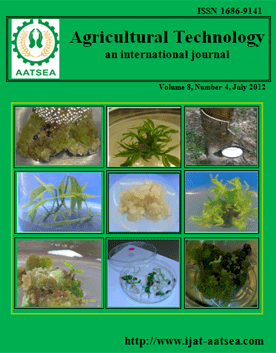ThaiScience
ThaiScience
INTERNATIONAL JOURNAL OF AGRICULTURAL TECHNOLOGY
Volume 14, No. 07, Month DECEMBER, Year 2018, Pages 1147 - 1160
The agricultural water resource management model in lam se bai irrigation area, amnat charoen province, thailand
Chunsuparerk, D.
Abstract Download PDF
Upon encountering crisis from climatic and geographical influences in Lam Se Bai irrigation in Hua Taphan district, Amnat Charoen province particularly during summer and rainy season, the impacts of drought and flood are considered as persistent obstacles to the subsistence and economic security for domestic farmers. Regarding its consequence as a principal stakeholder of approximately 474 Acres in the affected area, this research was conducted to solve significant problems specified as follows; submerging floodplains, water deficiency, inefficient water management, negligent maintenance, inadequate water conservation, and limited knowledge in agricultural water management. The findings indicated that public participation was a prior influence, followed by water management, agricultural support, maintenance, and water conservation. These five elements enabled relevant sectors to unravel the management problems. Primarily, water management encompassed policy, measure, and management machinery improvement. The policy comprised of exploration, usage, and countermeasure. However, machinery progress required multi-cooperation, where efficacy was demanding. Integration process facilitated public to engage in planning, implementation, and evaluation. This allowed water users to promptly resolve unexpected situations. Agricultural support required collaboration to set action plans. The general strategies was centralized on drought and flooding. Canalization for agricultural purpose in seven drought areas has been constructed. During seasonal flooding, off-season and overtaken paddy field were developed to elongate to floods. These strategies enabled farmers to live with climate variability. Maintenance entailed the coordination between water users and regional irrigation office to distribute an applicable regulation and monitoring strategy, along with water conservation. Natural calamity and farming activities affected water quality. Organic farming and new theory agriculture practically conserved resource quality in the studied areas.
Keywords
Agricultural Support, Locals Integration, Participatory Management, Water SustainabilityINTERNATIONAL JOURNAL OF AGRICULTURAL TECHNOLOGY
Published by : Association of Agricultural Technology in Southeast Asia (AATSEA)
Contributions welcome at : http://www.ijat-aatsea.com
